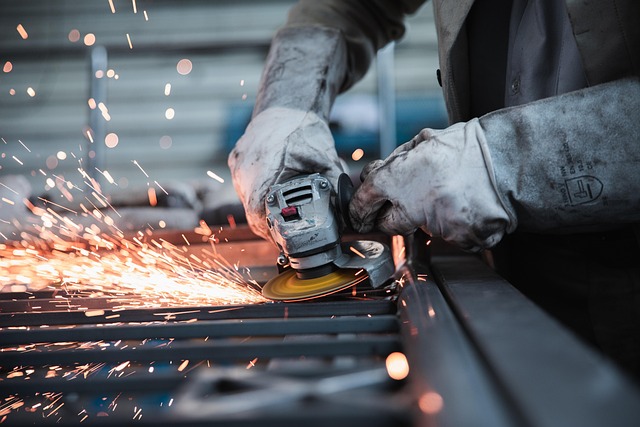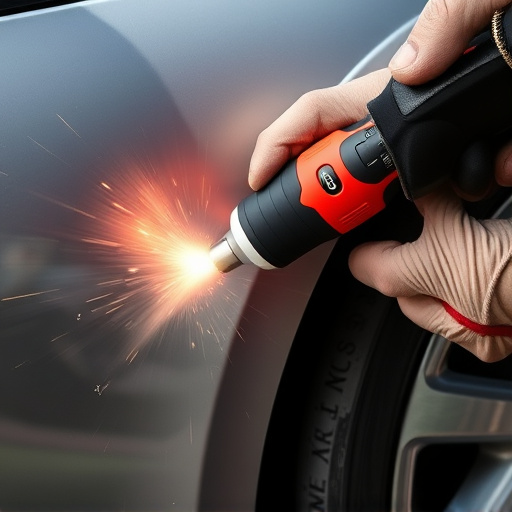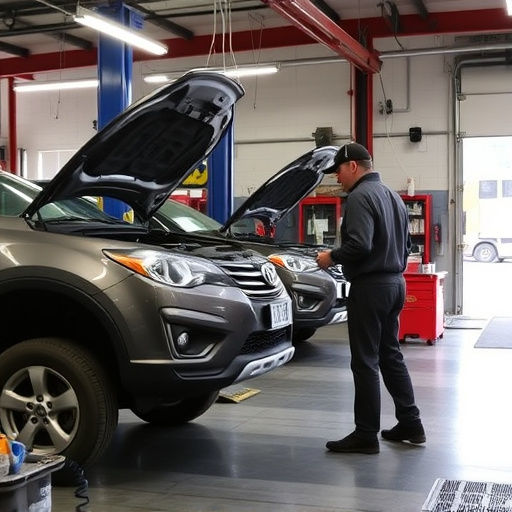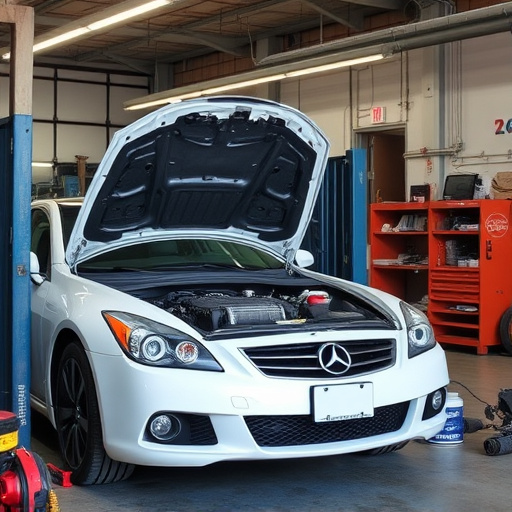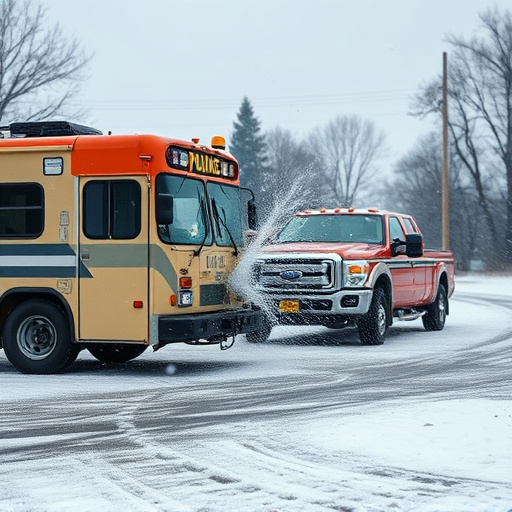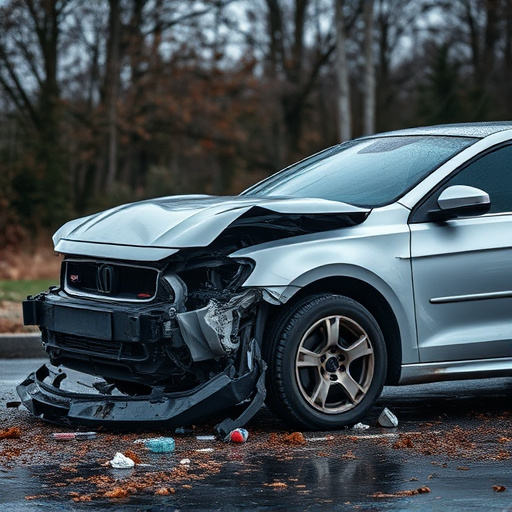The Tesla 12V electrical system, vital for lighting and safety, demands specialized knowledge for repair. Power losses due to faults like faulty connections, damaged components, or alternator issues require systematic diagnosis. Repairs involve identifying the problem component (battery, alternator, etc.), using correct tools and parts, making safe disconnections, following replacement guides, and testing with a voltage meter. DIY repairs are possible with guides but professional assistance is advised for peace of mind, focusing on Tesla 12V system repair.
Experiencing power loss in your Tesla? The 12V electrical system is a critical component that can cause frustrating issues. Understanding its intricate workings and common problems is key to effective repairs. This guide delves into the core of the Tesla 12V system, uncovering common causes of power loss, and providing a detailed step-by-step repair process. By following these instructions, you’ll be equipped to tackle and resolve 12V system problems, ensuring your Tesla runs smoothly once more.
- Understanding Tesla's 12V Electrical System
- Common Power Loss Causes and Diagnosing Issues
- Step-by-Step Guide to Repairing the 12V System
Understanding Tesla's 12V Electrical System
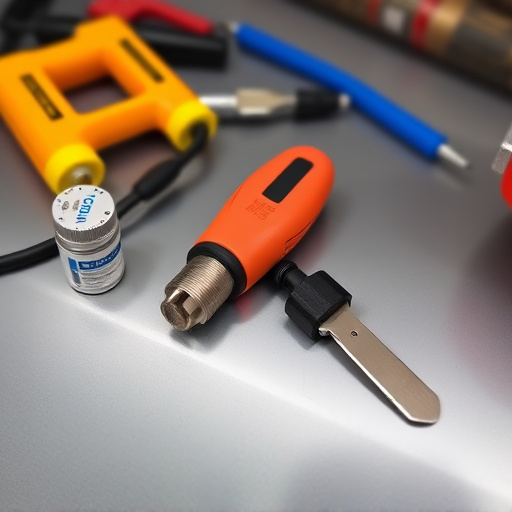
Tesla’s 12V electrical system is a critical component that powers essential functions within the vehicle, from lighting and audio systems to various comfort features. Understanding this network involves recognizing its intricate design, which includes specialized components tailored for high-performance luxury vehicle repair requirements. The system operates independently of the main 12V battery, ensuring backup power for critical safety features, a key aspect in automotive body work and vehicle paint repair scenarios.
A malfunction in the Tesla 12V system can lead to various issues, such as dim lighting, failed electronic controls, or even more severe problems associated with safety systems. To address these challenges effectively, homeowners or professional technicians engaged in luxury vehicle repair need a thorough understanding of the system’s architecture and its interaction with other components. This knowledge is essential for accurate diagnosis and successful Tesla 12V system repair, ensuring optimal performance and reliability.
Common Power Loss Causes and Diagnosing Issues

Power loss in a Tesla, particularly issues with the 12V system, can stem from various sources. Common causes include faulty battery connections, worn-out or damaged electrical components, loose wires, or problems within the alternator. Sometimes, even minor issues like corroded terminals or a failing voltage regulator can lead to significant power loss.
Diagnosing these problems requires a systematic approach. Start by inspecting the battery for any signs of damage or corrosion. Check the 12V system’s electrical connections, looking for loose or faulty cables. Using diagnostic tools, test the alternator’s output and the voltage regulator’s functionality. Additionally, examining the electrical load on the system and verifying proper grounding can help pinpoint the root cause of power loss issues in Tesla vehicles. Remember that a thorough diagnosis is crucial before proceeding with any Tesla 12V system repair to ensure effectiveness and longevity of the solution.
Step-by-Step Guide to Repairing the 12V System
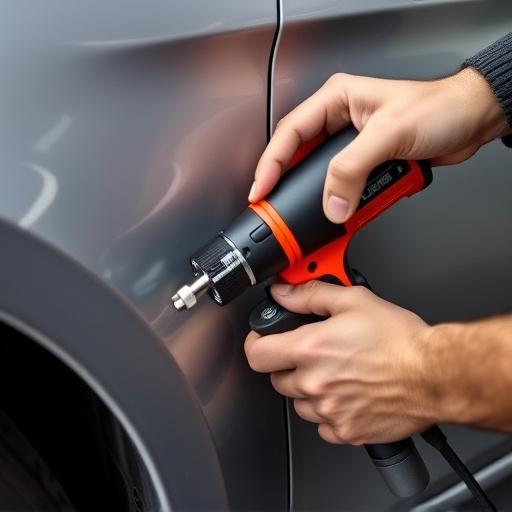
Repairs to a Tesla’s 12V system can be a straightforward process if approached systematically. Begin by identifying the specific component causing the power loss, whether it’s the battery, alternator, or fusible links. The next step involves gathering the necessary tools and replacement parts, ensuring compatibility with your Tesla model. Turn off the vehicle’s main power supply and disconnect any components under repair to prevent short circuits.
Follow a detailed, step-by-step guide for each component replacement: battery, alternator belt, or fusible links. Ensure proper connections after replacing each part, double-checking for loose ends or incorrect wiring. After repairs, conduct thorough testing with a voltage meter to confirm the 12V system’s functionality before reactivating the main power supply. If you’re not comfortable performing these tasks yourself, consult an experienced automotive body shop specializing in Tesla vehicle repair.
Tesla owners experiencing power loss issues can now effectively diagnose and repair their vehicle’s 12V system with this comprehensive guide. By understanding the intricate components of the Tesla 12V electrical system, identifying common causes of power outages, and following a step-by-step approach to repairs, car enthusiasts can ensure their vehicles run smoothly without constant trips to the mechanic. Armed with knowledge and the right tools, repairing the Tesla 12V system is now accessible, empowering owners to take control of their vehicle’s performance and reliability.
